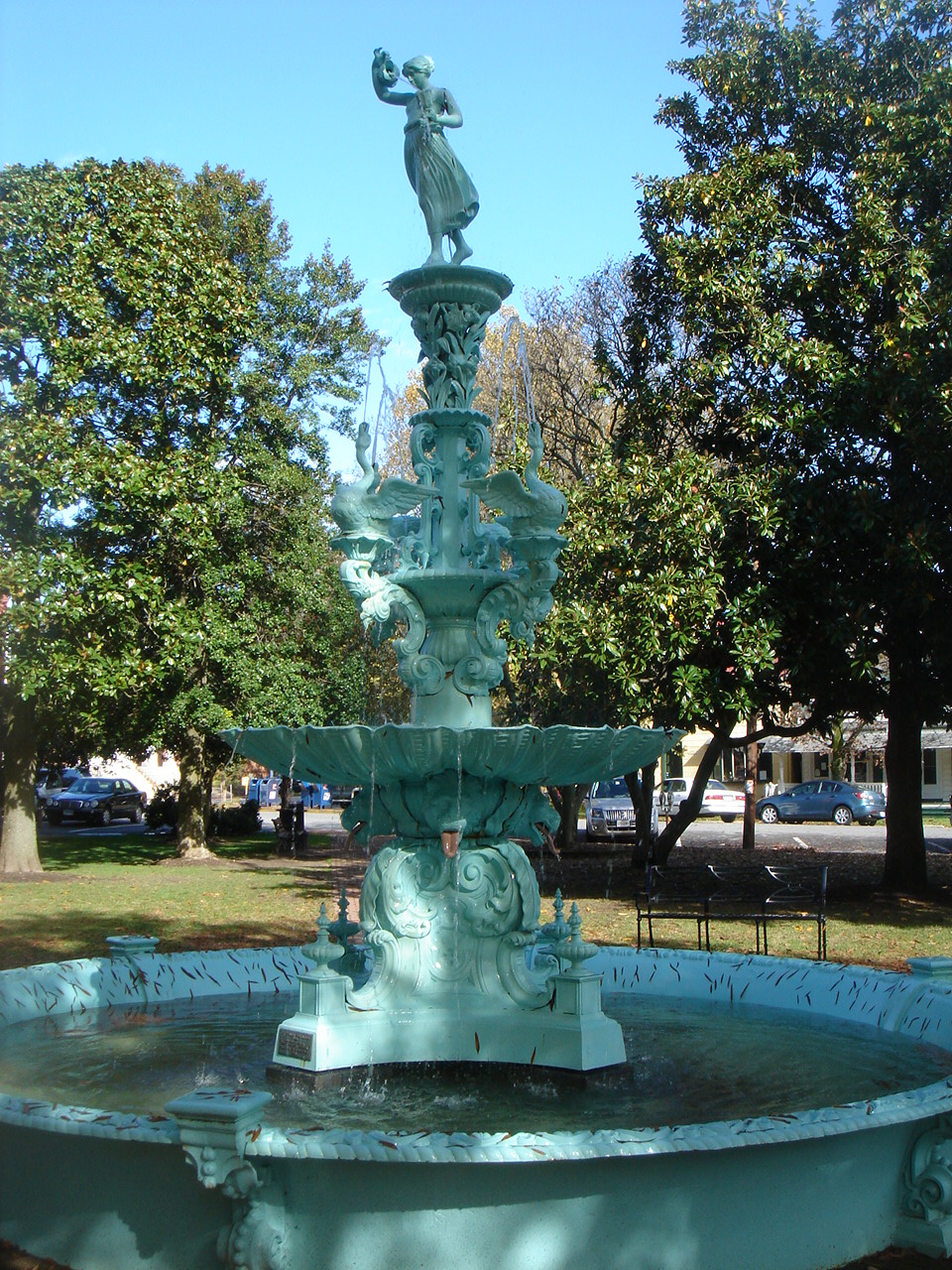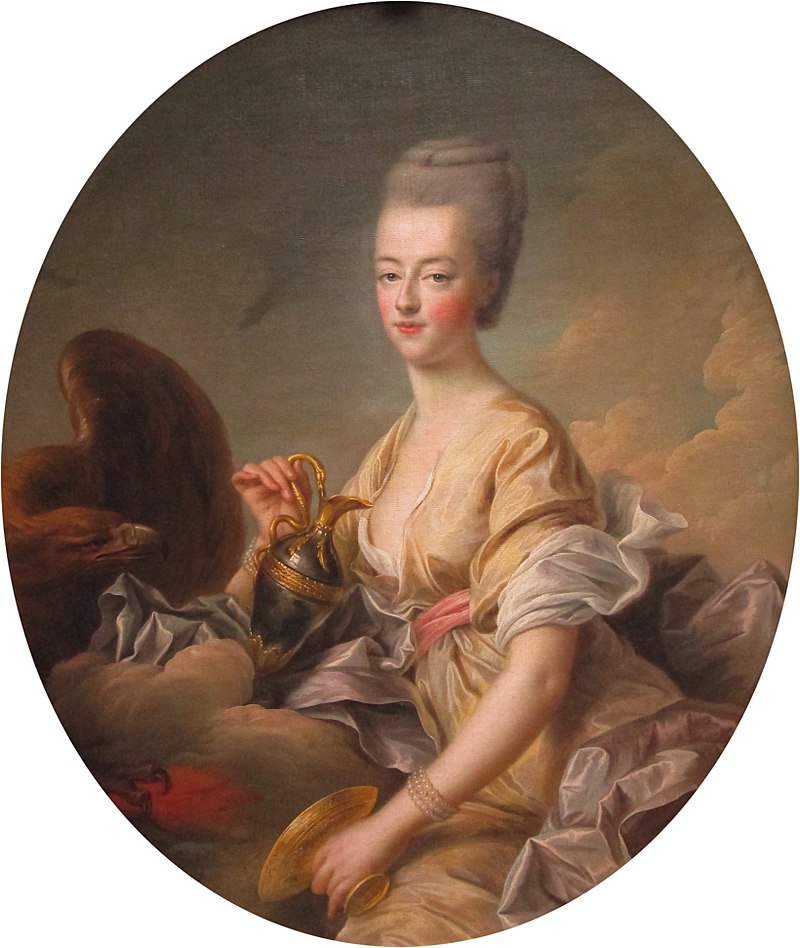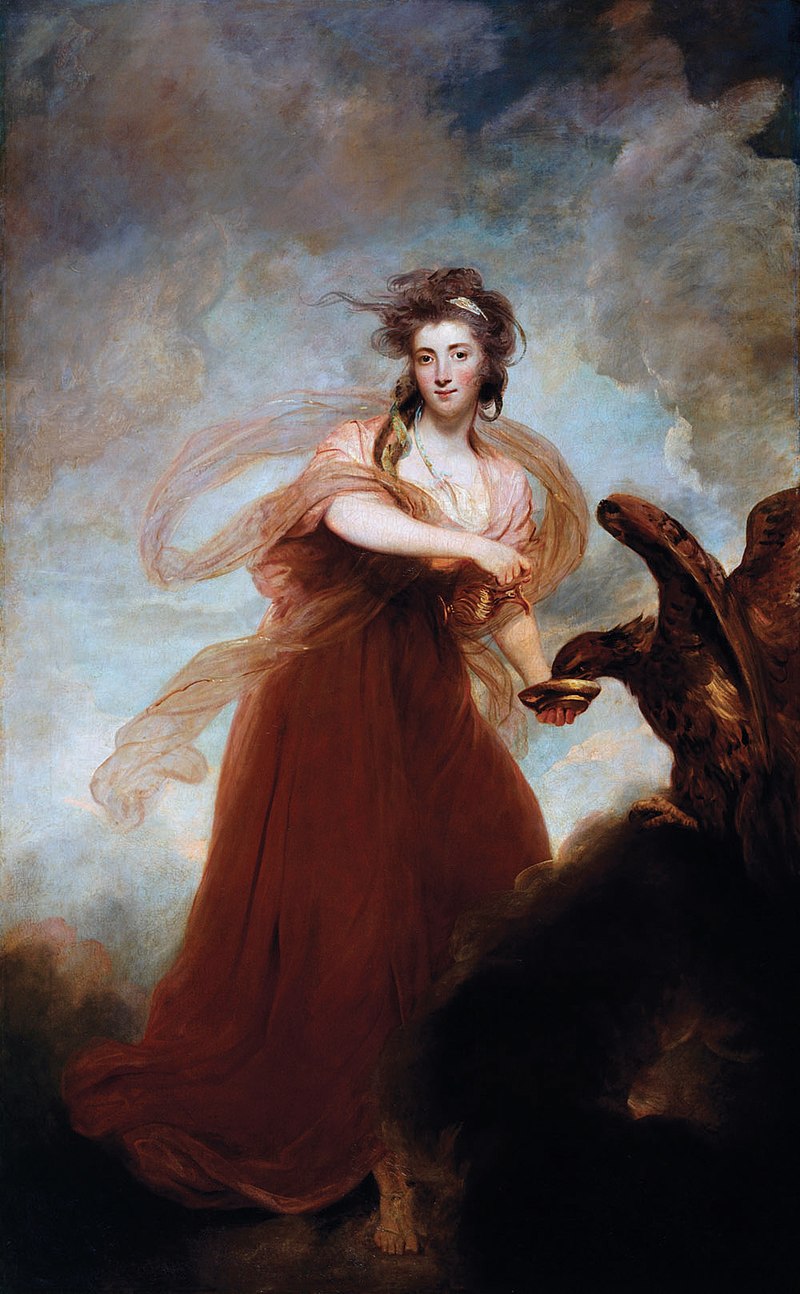
Hebe, Fountain Park, Chestertown
August 15 was the 125th anniversary of the installation of the Hebe fountain in Fountain Park in Chestertown. Hebe was the youngest daughter of Zeus and his sister-wife Hera. According to Pindar (c.515-438 BCE), one of the famous lyric poets of Greece, Hebe was the most beautiful of the goddesses. The Greek word Hebe means youth or prime of life. The goddess Hebe played an important role on Mt Olympus as the cupbearer to the Gods. She was responsible for providing ambrosia, the nectar of the gods, the elixir of eternal youth. Hebe danced with Aphrodite, the goddess of love and beauty, and was Aphrodite’s herald. Hebe is often present with Aphrodite in images of weddings in ancient art.
On the Chestertown Fountain, Hebe pours ambrosia from a pitcher into a cup. Below, swans spout water. They represent inner beauty, innocence, and a commitment to others. Swans were the symbols of the Muses that inspired poets and artists. The base of the fountain is a large shell that collects the water, a reference to the birth of Aphrodite. Born in the sea, she was ferried ashore on a large seashell pulled by dolphins. A famous depiction of this is “Birth of Venus” by Botticelli (1482-85). The shell is supported by lions’ heads. Lions represent power, courage, and justice, but most important in the fountain, they represent protection.

“Marie Antoinette as Hebe” (1773)
“Marie Antoinette as Hebe” (1773) (38”x31”) was painted by Francois Drouais (1727-1775), a popular portrait artist in the court of Louis XV. Portraying royal women as Greek goddesses became very popular in the Rococo Period (c.1750-1880). Marie Antoinette was Dauphine, not yet Queen, at the time of this painting. She was just 14 years old. Hebe was a very popular subject, often depicted with a pitcher and goblet, and an eagle that represented her father Zeus. Drouais and the artists of the Rococo period preferred pastel colors, unlike the rich colors of the previous Baroque period.

“Mrs Musters as Hebe”(1785)
“Mrs. Musters as Hebe” (1785) (94”x57”) was painted by English artist Sir Joshua Reynolds (1723-1792). Reynolds’s style was a blend of Baroque and Rococo styles. The soft pastel clouds and Hebe’s transparent scarf represent the Rococo. The dress and eagle are painted in the deep reds, browns, and blacks of the Baroque. Sophia Catherine Muster (1758-1819) was 24 years old at the time her portrait was painted. It was intended for her husband, but it was given to the Prince of Wales (1762-1830), later George IV. Mrs. Musters was believed to be one of his many lovers.

“Anne Pitt as Hebe” (1792)
“Anne Pitt as Hebe” (1792) (55”x39”) was painted by Elizabeth Vigee-Lebrun, Marie Antoinette’s favorite painter. Vigee-Lebrun wrote in her memoirs about painting the sixteen-year-old Miss Anna Pitt while they were in Rome. Vigee-Lebrun fled Paris on the same night that Louis XVI and Marie Antoinette were arrested. Looking for accuracy in her representation of the eagle, Vigee-Lebrun borrowed an eagle from Cardinal de Bernis. The eagle, unhappy about being brought into the studio, behaved badly. Vigee-Lebrun managed to depict a calm bird.

“Hebe” (1800-1805)
“Hebe” (1800-1805) (62.2’’) (marble) was sculpted by the Italian Antonio Canova (1757-1822), considered to be one of the greatest sculptors of the Neo-classical period (1760’s until 1850’s). After the French Revolution, artists returned to the Classical style of ancient Greece. Hebe holds the pitcher and cup, this time with a golden metal finish. Her figure is classically proportioned, and she is partially nude. Canova treated her garment with the wet drapery look used by the Greeks before female nudes became popular. “Hebe” descends from the clouds above Mt Olympus.
Delegates to the National Woman’s Christian Temperance Union, at its convention in1874, officially encouraged erection of Temperance Fountains, many depicting Hebe, in American hometowns. Tea and coffee were expensive, beer was unacceptable, but fresh drinking water was safer, cleaner, and free. Numerous “Hebe” fountains were cast from a mold that was very similar to Canova’s sculpture. Chestertown’s “Hebe” may be one of them.

“Hebe and Jupiter” (1852-57)
“Hebe and Jupiter” (1852-57) (marble) was commissioned by the city of Dijon, France, from native-son Francois Rude. Rude chose to depict Hebe with a full-sized eagle, representing her father Jupiter (Roman name for Zeus). With wings spread out behind Hebe, the eagle looks up in anticipation of receiving the ambrosia. Several smaller sculptures of the statue were cast in bronze and can be seen in American museums. Rude is known for his sculpture “Departure of the Volunteers” (1792), frequently called “La Marseillaise” on the Arc de Triomphe in Paris.

“Hebe Taking Hercules to Mt Olympus” (c.525 BCE)
Sculptures of Hebe from ancient Greece represent her as a goddess, sometimes with wings, and sometimes without them. “Hebe Taking Hercules to Mt Olympus” (c.525 BCE) (Ricci hydria water jar) (black figure vase) (Etruscan) is a depiction of another part of Hebe’s story. Goddess of brides, she originally was unmarried. When the mortal Hercules died, she was charged with bringing him to Mt Olympus where he was made him immortal. Hebe became the divine wife of Hercules. The images of Hercules, following the tradition, depict him with short, curly hair and a beard. He wears a lion’s skin over his shoulder and carries a large club.
Beverly Hall Smith was a professor of art history for 40 years. Since retiring to Chestertown with her husband Kurt in 2014, she has taught art history classes at WC-ALL and the Institute of Adult Learning, Centreville. An artist, she sometimes exhibits work at River Arts. She also paints sets for the Garfield Theater in Chestertown.



Muriel Cole says
That is fascinating! Did not know it may have been a “temperance fountain”!